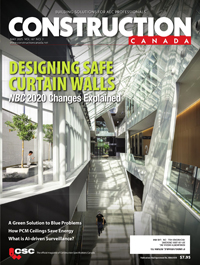The challenge of noise mitigation
Objective of the code
OBC sets minimum requirements for various building components, such as structural systems, fire safety systems, the building envelope, plumbing, and HVAC systems, as well as the elements addressing acoustics.
When it comes to acoustics, requirements are summarized in Parts 3, 5, and 9 of the Ontario Building Code (OBC), addressing the following:
- sound control;
- protection from noise;
- sound transmission;
- STC;
- STC rating (airborne sound);
- determination of STC rating;
- the required sound control locations (airborne sound); and
- minimum STC rating (airborne).
It is important to note while sound control may be considered as mitigation at the source, protection from noise has to do with path and destination. Reducing, masking, blocking, and soundproofing are all measures with an impact on sound transmission. In this example, OBC considers the dwelling unit or suite in the hotel a potential source of noise.
To learn more, one can refer to OBC’s Article 3.3.4.6, “Sound Transmission,” Article 9.11.1.1, “Determination of Sound Transmission Class Ratings,” Article 9.11.2.1., “Minimum Sound Transmission Class Ratings,” and Article 9.11.2.2., “Building Services in an Assembly.” Information can also be found in tables 1 and 2 of Ministry of Municipal Affairs and Housing (MMAH) Supplementary Standard SB-3, Fire and Sound Resistance of Building Assemblies, (for prescriptive selection), as well as OBC’s Article 9.32.3.9, “Fan Ratings,” the articles in Part 6 of OBC’s Section 3, and Article 5.9.1.1., “Sound Transmission Class,” and Article 5.9.1.2., “Required Protection from Noise,” in OBC.
The specified slider id does not exist.







